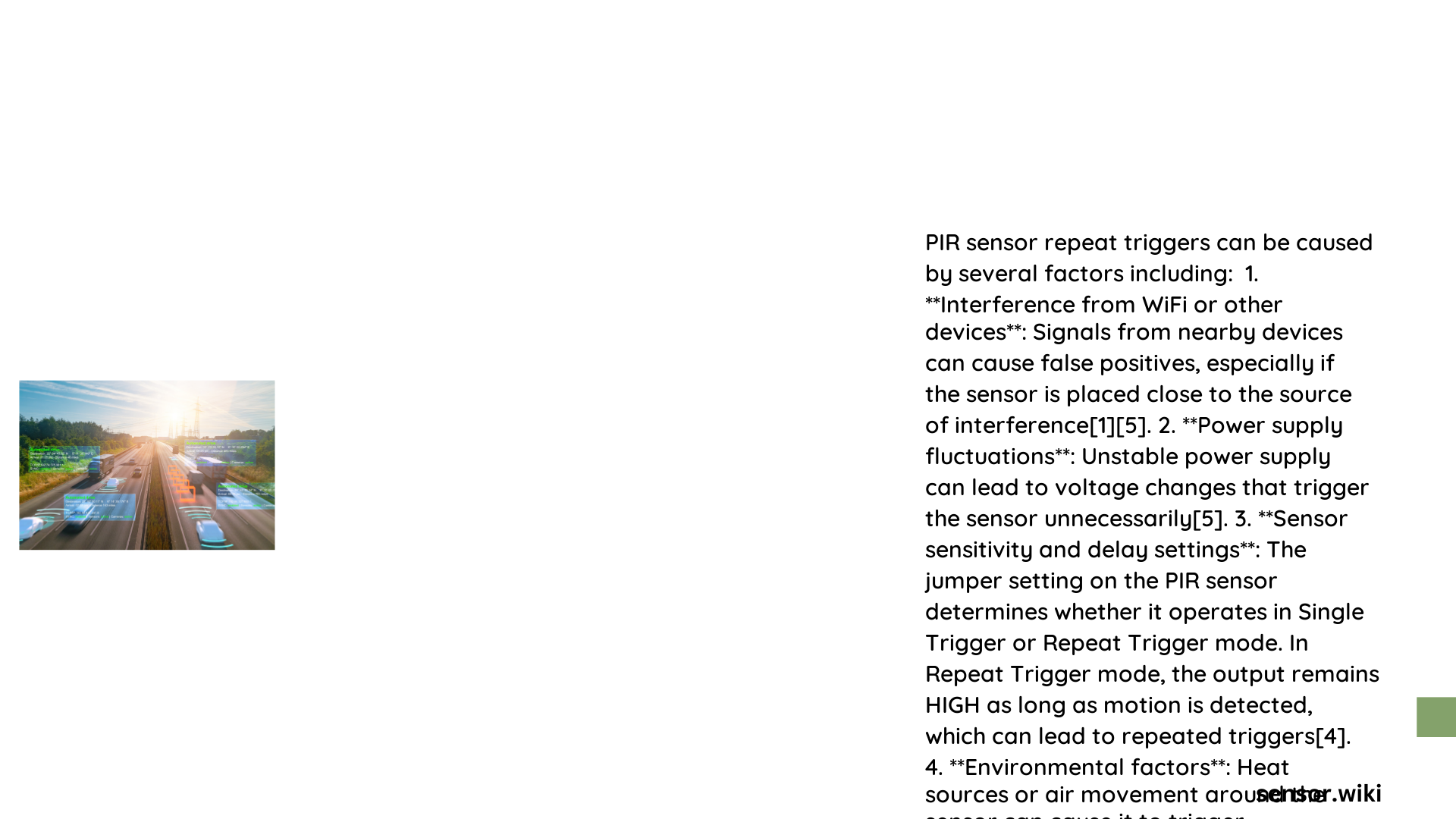Passive Infrared (PIR) sensors with repeat trigger functionality offer sophisticated motion detection capabilities across diverse environments. These intelligent sensors dynamically adjust sensitivity and delay parameters, enabling precise tracking of movement patterns while minimizing false triggers. Understanding their intricate operational mechanisms allows engineers and hobbyists to optimize sensor performance for security, automation, and monitoring applications.
What Makes PIR Sensor Repeat Trigger Unique?
PIR sensor repeat trigger represents an advanced motion detection mechanism where the sensor maintains an active output state for a predetermined duration after detecting initial movement. This sophisticated approach ensures comprehensive monitoring and responsive system integration.
How Do Sensitivity Levels Impact Detection?
PIR sensors offer adjustable sensitivity through potentiometer configurations:
| Sensitivity Level | Detection Range | Rotation Direction |
|---|---|---|
| Low | 3-4 meters | Counter-clockwise |
| Medium | 5-6 meters | Neutral Position |
| High | 7 meters | Clockwise |
Key Sensitivity Considerations:
- Horizontal motion detection proves more reliable
- Environmental interference can reduce accuracy
- Electronic device proximity affects performance
What Determines Optimal Delay Times?
Delay time configuration plays a critical role in repeat trigger functionality:
- Short Delays (5-10 seconds)
- Ideal for security systems
- Rapid response requirements
-
Minimal latency
-
Medium Delays (30-60 seconds)
- Suitable for automated lighting
- Balanced presence detection
-
Energy-efficient configurations
-
Extended Delays (1-5 minutes)
- Comprehensive monitoring scenarios
- Persistent motion tracking
- Reduced false negative risks
How Can You Troubleshoot Common PIR Sensor Issues?
Troubleshooting Strategies:
– Verify jumper settings for repeat trigger mode
– Adjust sensitivity potentiometer systematically
– Minimize electromagnetic interference
– Ensure proper sensor placement
– Use weather-resistant enclosures for outdoor applications
What Are Best Practices for Different Environments?
Indoor Configuration
- Recommended Sensor: HC-SR501 or AM312
- Sensitivity: 5-6 meter detection range
- Delay: 30-60 seconds
- Placement: Away from electronic devices
Outdoor Configuration
- Robust, weather-resistant sensors
- Maximum sensitivity setting
- Extended delay intervals
- Protective housing essential
Technical Recommendations
Advanced Implementation Tips:
– Use interrupt-driven programming
– Implement debounce mechanisms
– Consider temperature compensation
– Integrate complementary sensors for enhanced accuracy
Conclusion

Mastering PIR sensor repeat trigger requires understanding complex interactions between hardware configurations and environmental dynamics. Systematic experimentation and precise calibration unlock optimal motion detection performance.
